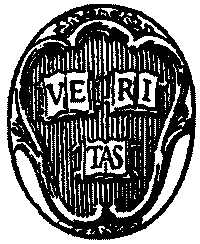THE PRINCIPLES OFENGLISH VERSIFICATION
BY
PAULL FRANKLIN BAUM

CAMBRIDGE
HARVARD UNIVERSITY PRESS
1924
LONDON: HUMPHREY MILFORD
OXFORD UNIVERSITY PRESS
COPYRIGHT, 1922
BY HARVARD UNIVERSITY PRESS
Third printing
PRINTED AT THE HARVARD UNIVERSITY PRESS
CAMBRIDGE, MASS., U. S. A.
Transcriber's notes & errata
The following symbols are used in this book.
| ‸ | CARET | A musical rest |
| ◡ | LOWER HALF CIRCLE | An unstressed syllable |
| _̷ | COMBINING SHORT SOLIDUS OVERLAY | A stressed syllable |
| [A] | A grave accent over the preceding unstressed syllable |
The following typographical errors have been corrected:
| Page | Error | Correction |
| 169 | ĭ | ī |
| 209 | the the | the |
TO
C. H. N. B.
PREFACE
Most of the older discussions of English versificationlabored under two difficulties: an undueadherence to the traditions of Greek and Latin prosodymore or less perfectly understood, and an exaggeratedformalism. But recently the interest and excitement(now happily abated) over free-verse have reopenedthe old questions and let in upon them not a littlelight. Even today, however, a great deal of metricalanalysis has wrecked itself on the visible rocks of afalse accuracy, and it is therefore not only out of cautionbut also out of mere common sense that we shouldeschew the arbitrary, even at the risk of vaguenessand an 'unscientific' admission of uncertainty. Forthe only great and annihilating danger of writing onversification is dogmatism. Our theorists, both oldand new, are first tempted and then possessed withtheir theories—all else becoming wrong and intolerable.In the following pages I have perhaps erred ina too frequent insistence on doubts and perplexities;perhaps also, on occasion, in a too plain statement ofopinion where judgments are bound to differ—sicse res habent.
Now it is plain that rhythm is one of the ultimatefacts of nature and one of the universal principles of[viii]art; and thus versification, which is the study of therhythms of verse, is both